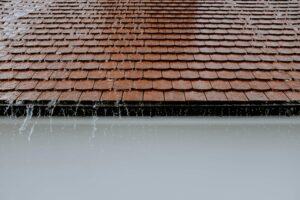When Seattle’s heavy rain turns into snow, the added weight can stress even a well‑built roof. Many homeowners underestimate how snow accumulation impacts roof structures, leading to leaks, sagging, and costly repairs.
In this guide, we’ll explain how roof damage from snow occurs, warning signs to watch for, and practical steps to reduce risk. Whether you own a newer home or an older property, understanding snow load helps you plan ahead and avoid major issues.
For more seasonal advice, explore:
Storm Survival: What to Do After a Storm Damages Your Roof
Importance of Ice and Water Shield in Roofing
How Snow Load Leads to Roof Damage
Weight Accumulation Over Time
Even a few inches of wet snow can weigh hundreds of pounds. As snow piles up, that load presses on rafters and trusses, increasing the risk of roof damage from snow—especially on older or poorly maintained roofs.
Ice Dams and Water Intrusion
When snow melts and refreezes near eaves, ice dams can form, pushing water under shingles. Over time, this leads to leaks, warped decking, and further roof damage from snow and ice.
Structural Stress and Sagging
Flat or low‑slope roofs are more vulnerable because snow doesn’t slide off easily. The extra weight can cause visible sagging or cracking, warning signs that shouldn’t be ignored.
How Seattle’s Climate Impacts Roof Performance
Rain-to-Snow Transitions
Seattle’s winter weather often alternates between heavy rain and sudden snow. This constant shift saturates roofing materials before snow even accumulates, making structures more prone to roof damage from snow.
Coastal Winds and Temperature Fluctuations
Strong winds common in the Puget Sound area can drive snow into roof valleys and under shingles. Rapid temperature changes then refreeze that moisture, stressing both the shingles and the underlayment.
Preventing Roof Damage From Snow
Schedule Seasonal Inspections
Inspect your roof before winter storms hit. Look for loose shingles, clogged gutters, or damaged flashing that can worsen under snow load.
Maintain Proper Ventilation and Insulation
Good attic ventilation reduces ice dam formation. Combined with adequate insulation, it helps prevent uneven melting and protects against roof damage from snow.
Clear Snow Safely When Needed
If snow piles up significantly, use a roof rake from the ground or hire professionals. Never climb onto an icy roof, as falls and further damage are serious risks.
For related protection tips, see Importance of Ice and Water Shield in Roofing.
Final Thoughts on Roof Damage From Snow
Seattle’s unpredictable winter weather means homeowners must stay vigilant. By understanding how roof damage from snow occurs, monitoring conditions, and taking preventive measures, you can protect your home and avoid expensive structural repairs.
Protect your home before the next storm hits.
Understanding how roof damage from snow happens is the first step—taking action is the next.
👉 Schedule a professional roof inspection with Orca Roofing today to identify vulnerabilities and learn how to safeguard your roof against Seattle’s heavy snow and rain.


